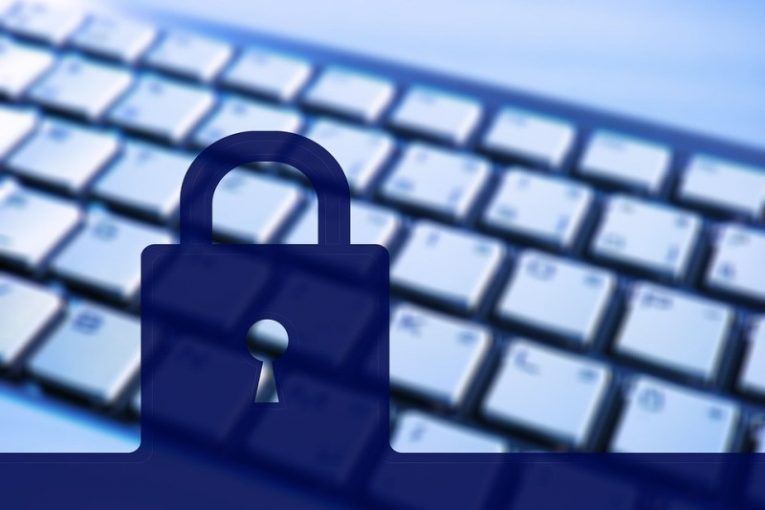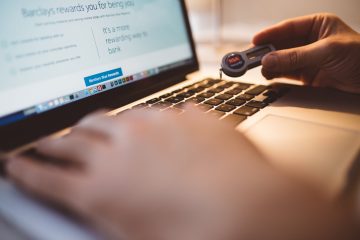What to Do When I Get Locked out by Google Authenticator?

Databases still get hacked and passwords leaked despite specialists' best intentions to prevent this from happening, so two-factor authentication, also known as 2FA, is not an option, but rather a MUST in the contemporary world. Usually, enabling two-factor authentication means that users have to enter something they know, i.e. their ordinary password and something they have, for example, a unique code sent to their phones as a text message to log into their accounts. The alternative to these temporary verification codes sent via SMS messages, which, in fact, can be hijacked without much difficulty by hackers, is an authenticator app.
Table of Contents
The growing popularity of Google Authenticator
According to statistics available at Statista, the popularity of authenticator apps is steadily growing. The total number of American Internet users who use the authenticator app as the primary verification method has increased from 46% to 52%, between 2010 and 2017, which clearly shows that people are becoming more and more security-minded. Unsurprisingly, Google Authenticator is one of the most popular authenticator apps available on the market. Is it the best one? That is up to you to decide.
How does Google Authenticator work?
Google Authenticator is a free token-based two-factor authentication application available for Android and iOS. It can be downloaded directly from Google Play and iTunes. There are three main reasons users choose it over other authenticator apps. First of all, it has been developed by Google, which automatically adds some credibility. Second, it does not cost a penny. Third, it is very easy to use. To start using it, users have to enable two-factor authentication on services they use, e.g. Facebook, Dropbox, and Gmail, and then, once enabled, take a snapshot of a QR code using Google Authenticator to add the account. Users can add as many accounts as they like, but there are websites that still do not support two-factor authentication. Google Authenticator is not some kind of superhero that can use its superpowers to apply changes to websites and enable two-factor authentication on them, so you simply have to accept the fact that it will not work on all websites.
Once you set up Google Authenticator, i.e. scan the QR code, you will be asked to enter a login, an ordinary password, and a six-digit number to authenticate your identity and log into your account. Google Authenticator generates a unique verification code for each added account and changes these codes every 30 seconds to prevent them from ending up in hackers' hands. Not bad, huh?
Some people still consider enabling two-factor authentication a hassle, but, believe us, it is worth spending some time to set it up to prevent your accounts from being hacked, especially when so many large-scale data breaches are registered these days. Even if cybercriminals get your login credentials, they could not access your online account as long as they do not have your smartphone with Google Authenticator on it in their hands and cannot get the so-called "second factor”.
Problems you might face using Google Authenticator
Google Authenticator is no doubt a handy tool that can make the authentication procedure considerably easier; however, it would be a lie if we told you that it is perfect. The first existing problem is that you may get locked out of all your websites by Google Authenticator if you forget your smartphone at home and cannot access it. Generally speaking, the authenticator app works as a key to your house. Luckily, this is a temporary problem because you can go home and pick up the device you use. Second, since Google Authenticator does not create a backup of a single saved website, you will have to set up each website in the app again when you purchase a new phone, which many users find quite tiresome.
The app does not make any backups for security purposes, but this is where the main problem lies. You will get completely locked out by Google Authenticator if you lose access to your old phone since no backups exist. Imagine getting locked out of all your business accounts that depend on the authenticator app at the worst possible time. That smells like a total disaster, doesn't it?
Some websites, including Google and Dropbox, allow users to set up multiple methods of two-factor verification to prevent such situations when users get locked out by Google Authenticator, whereas others require users to contact customer support ASAP in such event.
Oh no, I have been locked out by Google Authenticator. What do I do now?
Have you been locked out of your accounts by Google Authenticator? It is not the end of the world if you can access the so-called backup codes provided by the website you have turned the two-factor authentication on.
A backup code is your one and only hope to log into your account again if you have lost access to your one-time password token. Usually, one code can be used to access the account once. That is, it becomes inactive immediately after it is entered. Some users generate and write these backup codes (for example, Google allows generating a set of 10 unique codes) down on a sheet of paper or simply keep them listed in a document on their computers, but these are not the safest practices. These important codes can grant unauthorized people access to your accounts, so they should all be kept in a safe place, for example, you can keep them in a password-protected private note you can generate using Cyclonis Password Manager. The password manager will keep your notes encrypted in a secure vault. Alternatively, you can take a screenshot of your codes and then encrypt the file to hide file contents from prying eyes.
Get the backup code before it is too late
Do not say that you will never get locked out of your accounts by Google Authenticator because bad things happen in life. Instead, get backup codes today and keep them in a safe place.
- Access the 2-Step Verification page.
- Select Setup or Show codes under Backup codes.
- Go to your profile.
- Tap three horizontal dots (iOS) or three vertical dots (Android) in the top-right corner.
- Access Two-Factor Authentication.
- Tap Get Backup Codes.
- Access Settings.
- Go to Security and Login.
- Click Use two-factor authentication under Two-Factor Authentication.
- Click Setup alongside Recovery Codes.
- Click Get Codes.
- Open the Account tab on Twitter.com.
- Click Get backup code.
Dropbox
- Click your avatar after you sign-in.
- Select Settings.
- Open the Security tab.
- Click Show next to Recovery codes located under Two-step verification.
- Enter your password.
- Save the backup code.
Tip: if you cannot access your Google Authenticator, e.g. you have lost your smartphone and do not have a backup code, you should contact the service provider directly.








